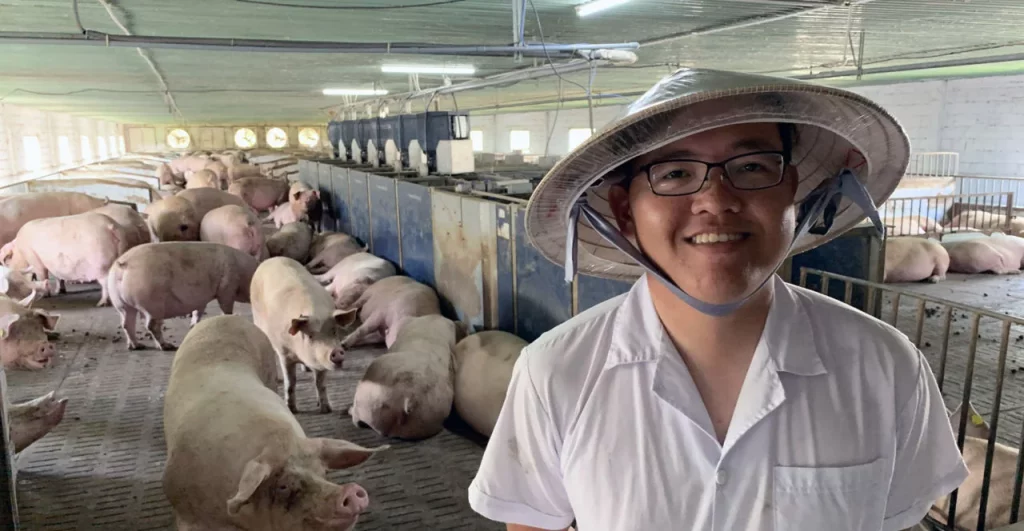Better results, lower costs. “The differences between the two systems is striking. We’re talking about serious money.”
In Vietnam pig farming is all about efficiency
In 2010 Dahn Nguyen started to build his pig farm in Kinh Te Hamlet, Vietnam. A farm with a traditional housing system and a substantial amount of employees. Now, after expanding his farm with 600 sows to a group housing system with Nedap SowSense, his business is 30% more labor efficient, shows better results and food waste is reduced to zero. Seems incredible? This is how Dahn Nguyen pulled it off.
Individual feed schedule
The idea to switch to group housing started two years ago at the Ildex Convention in Ho Chi Minh City. At this annual event with new technology, equipment and systems for animal husbandry among other things, Dahn got in touch with Nedap. “I decided to switch one stable to group housing in dynamic groups and invest in feeding stations with Electronic Sow Feeding”, Dahn recalls. “Till then the employees had to feed all the sows by hand. Which meant hard work and no individual feed schedule. Also every day around fifty kilograms of sow feed was wasted by food that remained in the troughs. With the Electronic Sow Feeding system they can adjust the schedule individually and the feed is supplied in small portions of 70 grams, so that no residues remain in the trough. This saves us a lot of money, because feed costs in Vietnam are relatively high, due to the expensive corn import.”

Good body condition
The dynamic group housing and precise, individual feed schedules also has other advantages according to Dahn. “In the groups the sows are able to walk around and are in good body condition prior to farrowing. The separation station automatically detects and separates the sows that have to go to the farrowing house or sows that are again in heat according to the Automated Heat Detection. So that saves us a lot of labor costs. With dynamic instead of static groups we can reduce the number of farrowing pens and it also gives us the opportunity to make better use of the farrowing stable capacity”, the owner explains.
User friendly software
Why did Nguyen actually choose Nedap and not another feeding system? “To me it was really clear”, Dahn says. “The Nedap products are of high quality. It’s mainly made of steel, where other systems use a lot of plastic. Also the software is user friendly: it integrates very smooth with our Cloudfarms management software. Another advantage is that the Nedap software has a Vietnamese version, which of course makes it easier for our employees.” The local Nedap distributor Peja installed the system in two weeks and trained the employees of Dahn together with the Nedap application and support team. “Our veterinarian, our manager, my dad and I use the software for analysis. Once a week I perform a overall check via my smartphone. Our farm manager uses the program daily.

He and the staff receive a daily report with the most important key figures. And when we need technical support, we can always count on fast and friendly on-farm support from Peja and Nedap.”
Striking differences
In addition to the group housing barn, Dahn also has 600 sows in traditional housing. The difference in reproduction results is striking. “The insemination rate is 92% and we have 28 piglets per sow per year in the Nedap system. For the traditional farm this is 25 piglets per sow per year. Add to that the difference in feed waste and the higher labor efficiency and you are talking about serious money”, the entrepreneur calculates. In the near future Dahn plans to invest in the mating stable. “Over there we still feed by hand. By investing in an automatic feed system we can reduce the workload there and hopefully improve the results even further”, Danh concludes his story.

